1. Coleman A, Weir KA, Ware RS, Boyd RN. Relationship between communication skills and gross motor function in preschool-aged children with cerebral palsy. Arch Phys Med Rehabil. 2013; 94:2210–2217. PMID:
23583864.

2. Parkes J, Hill N, Platt MJ, Donnelly C. Oromotor dysfunction and communication impairments in children with cerebral palsy: a register study. Dev Med Child Neurol. 2010; 52:1113–1119. PMID:
20813020.

3. QCPR. Report of the Queensland Cerebral Palsy Register: 1996–2005 birth years. Fortitude valley (QLD): QPCR;2012.
4. Hidecker MJ, Ho NT, Dodge N, Hurvitz EA, Slaughter J, Workinger MS, et al. Inter-relationships of functional status in cerebral palsy: analyzing gross motor function, manual ability, and communication function classification systems in children. Dev Med Child Neurol. 2012; 54:737–742. PMID:
22715907.

5. Himmelmann K, Lindh K, Hidecker MJ. Communication ability in cerebral palsy: a study from the CP register of western Sweden. Eur J Paediatr Neurol. 2013; 17:568–574. PMID:
23672835.

6. Hidecker MJ, Paneth N, Rosenbaum PL, Kent RD, Lillie J, Eulenberg JB, et al. Developing and validating the Communication Function Classification System for individuals with cerebral palsy. Dev Med Child Neurol. 2011; 53:704–710. PMID:
21707596.

7. Pennington L, Virella D, Mjøen T, da Grac¸a Andrada M, Murray J, Colver A, et al. Development of the Viking Speech Scale to classify the speech of children with cerebral palsy. Res Dev Disabil. 2013; 34:3202–3210. PMID:
23891732.

8. Hustad KC, Oakes A, McFadd E, Allison KM. Alignment of classification paradigms for communication abilities in children with cerebral palsy. Dev Med Child Neurol. 2016; 58:597–604. PMID:
26521844.

9. Hustad KC, Gorton K, Lee J. Classification of speech and language profiles in 4-year-old children with cerebral palsy: a prospective preliminary study. J Speech Lang Hear Res. 2010; 53:1496–1513. PMID:
20643795.

10. Bax M, Tydeman C, Flodmark O. Clinical and MRI correlates of cerebral palsy: the European Cerebral Palsy Study. JAMA. 2006; 296:1602–1608. PMID:
17018805.
11. Himmelmann K, Uvebrant P. Function and neuroimaging in cerebral palsy: a population-based study. Dev Med Child Neurol. 2011; 53:516–521. PMID:
21574988.

12. Compagnone E, Maniglio J, Camposeo S, Vespino T, Losito L, De Rinaldis M, et al. Functional classifications for cerebral palsy: correlations between the gross motor function classification system (GMFCS), the manual ability classification system (MACS) and the communication function classification system (CFCS). Res Dev Disabil. 2014; 35:2651–2657. PMID:
25062096.

13. Vos RC, Dallmeijer AJ, Verhoef M, Van Schie PE, Voorman JM, Wiegerink DJ, et al. Developmental trajectories of receptive and expressive communication in children and young adults with cerebral palsy. Dev Med Child Neurol. 2014; 56:951–959. PMID:
24773274.

14. Choi JY, Choi YS, Park ES. Language development and brain magnetic resonance imaging characteristics in preschool children with cerebral palsy. J Speech Lang Hear Res. 2017; 60:1330–1338. PMID:
28492849.

15. Virella D, Pennington L, Andersen GL, Andrada Mda G, Greitane A, Himmelmann K, et al. Classification systems of communication for use in epidemiological surveillance of children with cerebral palsy. Dev Med Child Neurol. 2016; 58:285–291. PMID:
26272847.

16. Barty E, Caynes K, Johnston LM. Development and reliability of the Functional Communication Classification System for children with cerebral palsy. Dev Med Child Neurol. 2016; 58:1036–1041. PMID:
27087436.

17. Eliasson AC, Krumlinde-Sundholm L, Rösblad B, Beckung E, Arner M, Ohrvall AM, et al. The Manual Ability Classification System (MACS) for children with cerebral palsy: scale development and evidence of validity and reliability. Dev Med Child Neurol. 2006; 48:549–554. PMID:
16780622.

18. Palisano RJ, Rosenbaum P, Bartlett D, Livingston MH. Content validity of the expanded and revised Gross Motor Function Classification System. Dev Med Child Neurol. 2008; 50:744–750. PMID:
18834387.

19. American Psychiatric Association. Diagnostic and statistical manual-text revision (DSM-IV-TRim, 2000). 4th ed. Washington, DC: American Psychiatric Association;2000.
21. Fisher RS, van Emde Boas W, Blume W, Elger C, Genton P, Lee P, et al. Epileptic seizures and epilepsy: definitions proposed by the International League Against Epilepsy (ILAE) and the International Bureau for Epilepsy (IBE). Epilepsia. 2005; 46:470–472. PMID:
15816939.

22. Choi JY, Rha DW, Park ES. The effects of the severity of periventricular leukomalacia on the neuropsychological outcomes of preterm children. J Child Neurol. 2016; 31:603–612. PMID:
26385973.

23. Swinscow T. Campbell MJ, editor. Statistics at square one. 9th ed. London: BMJ Publishing Group;1996.
24. Sala DA, Shulman LH, Kennedy RF, Grant AD, Chu ML. Idiopathic toe-walking: a review. Dev Med Child Neurol. 1999; 41:846–848. PMID:
10619285.

25. Kim H, Carlson AG, Curby TW, Winsler A. Relations among motor, social, and cognitive skills in pre-kindergarten children with developmental disabilities. Res Dev Disabil. 2016; 53–54:43–60.

26. Gernsbacher MA, Sauer EA, Geye HM, Schweigert EK, Hill Goldsmith H. Infant and toddler oral- and manual-motor skills predict later speech fluency in autism. J Child Psychol Psychiatry. 2008; 49:43–50. PMID:
17979963.

27. Mody M, Shui AM, Nowinski LA, Golas SB, Ferrone C, O'Rourke JA, et al. Communication deficits and the motor system: exploring patterns of associations in autism spectrum disorder (ASD). J Autism Dev Disord. 2017; 47:155–162. PMID:
27785593.

28. Zhang JY, Oskoui M, Shevell M. A population-based study of communication impairment in cerebral palsy. J Child Neurol. 2015; 30:277–284. PMID:
25051968.

29. Geytenbeek JJ, Oostrom KJ, Harlaar L, Becher JG, Knol DL, Barkhof F, et al. Language comprehension in nonspeaking children with severe cerebral palsy: Neuroanatomical substrate? Eur J Paediatr Neurol. 2015; 19:510–520. PMID:
26112263.

30. Choi JY, Choi YS, Rha DW, Park ES. The clinical outcomes of deep gray matter injury in children with cerebral palsy in relation with brain magnetic resonance imaging. Res Dev Disabil. 2016; 55:218–225. PMID:
27214680.

31. Resić B, Tomasović M, Kuzmanić-Samija R, Lozić M, Resić J, Solak M. Neurodevelopmental outcome in children with periventricular leukomalacia. Coll Antropol. 2008; 32(Suppl 1):143–147.
32. Krägeloh-Mann I, Helber A, Mader I, Staudt M, Wolff M, Groenendaal F, et al. Bilateral lesions of thalamus and basal ganglia: origin and outcome. Dev Med Child Neurol. 2002; 44:477–484. PMID:
12162385.

33. Imamura T, Ariga H, Kaneko M, Watanabe M, Shibukawa Y, Fukuda Y, et al. Neurodevelopmental outcomes of children with periventricular leukomalacia. Pediatr Neonatol. 2013; 54:367–372. PMID:
23727042.

34. Reid SM, Dagia CD, Ditchfield MR, Reddihough DS. Grey matter injury patterns in cerebral palsy: associations between structural involvement on MRI and clinical outcomes. Dev Med Child Neurol. 2015; 57:1159–1167. PMID:
25970144.

35. Woodward LJ, Clark CA, Bora S, Inder TE. Neonatal white matter abnormalities an important predictor of neurocognitive outcome for very preterm children. PLoS One. 2012; 7:e51879. PMID:
23284800.

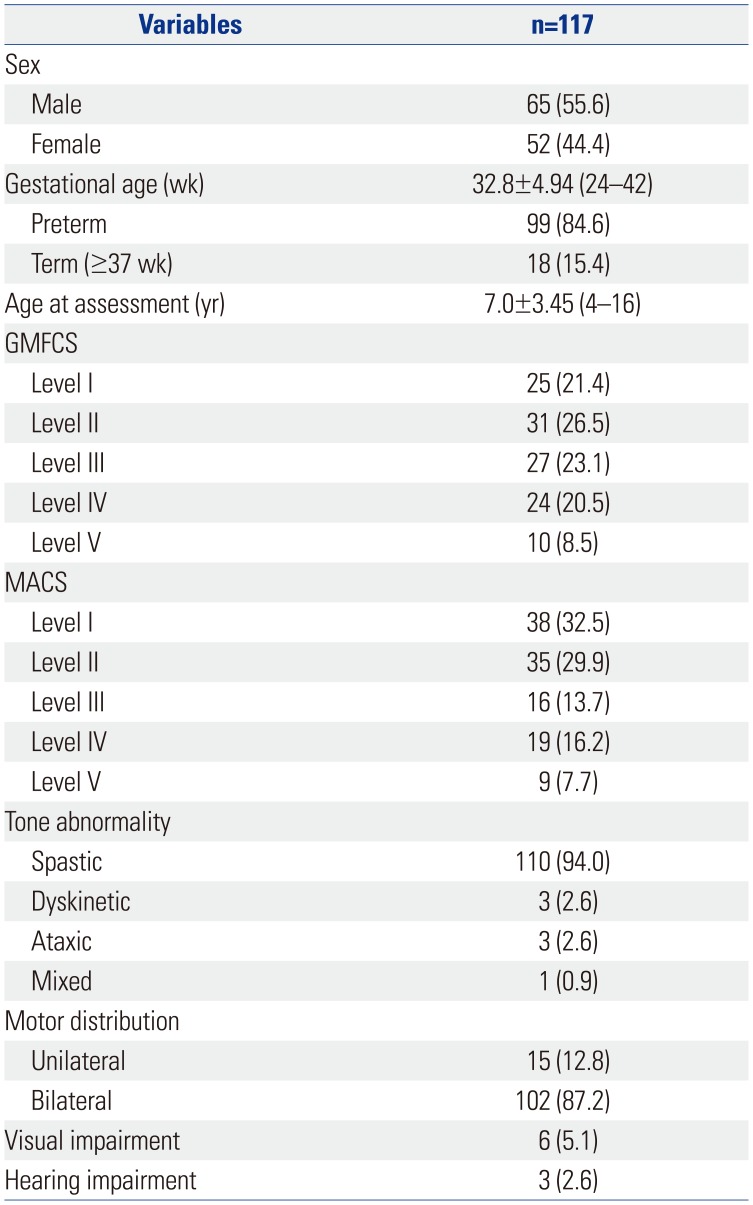
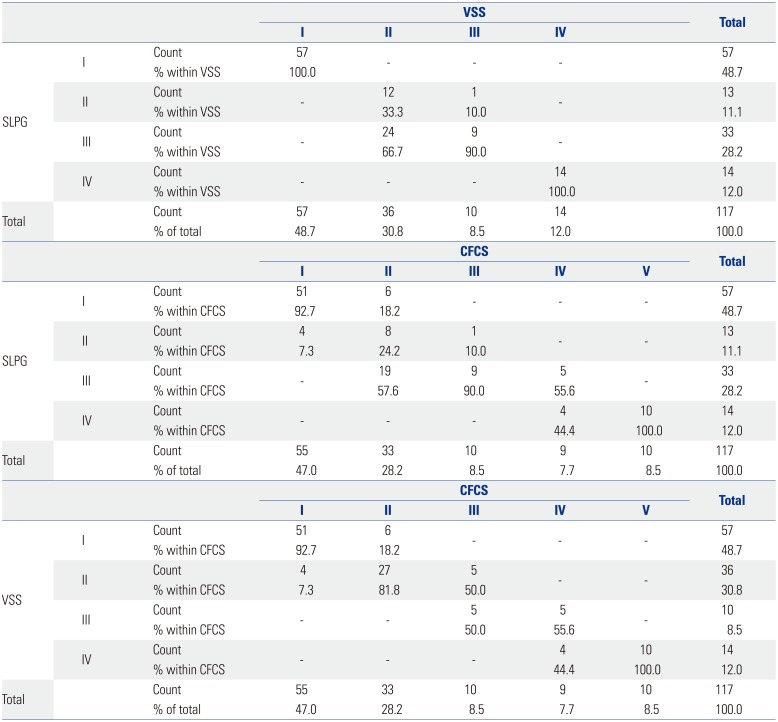

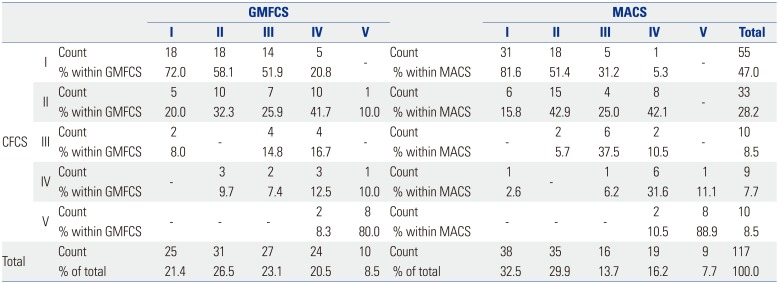
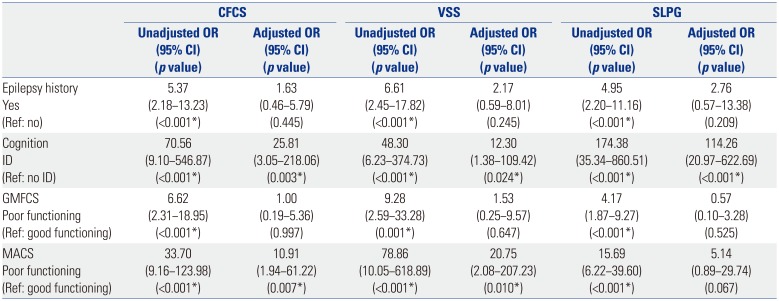
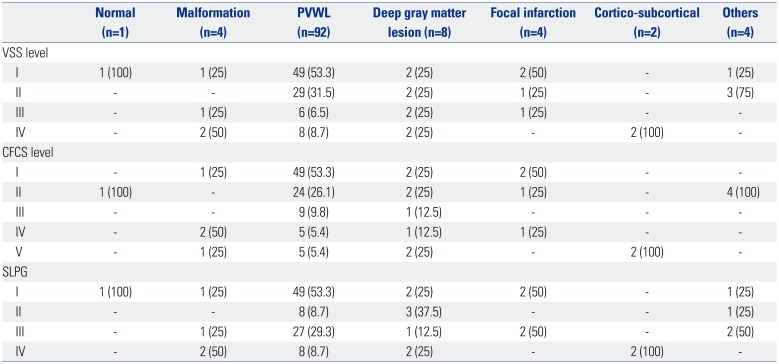






 PDF
PDF ePub
ePub Citation
Citation Print
Print



 XML Download
XML Download